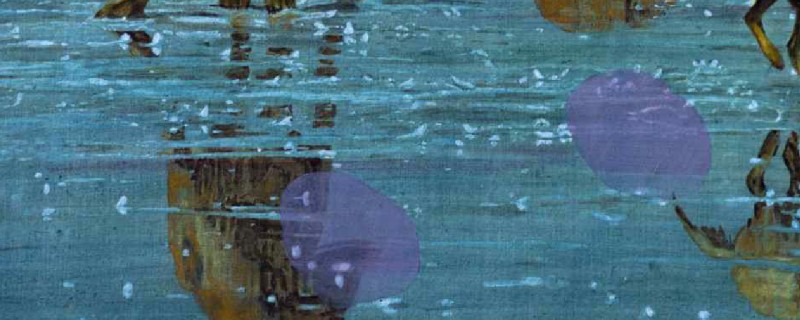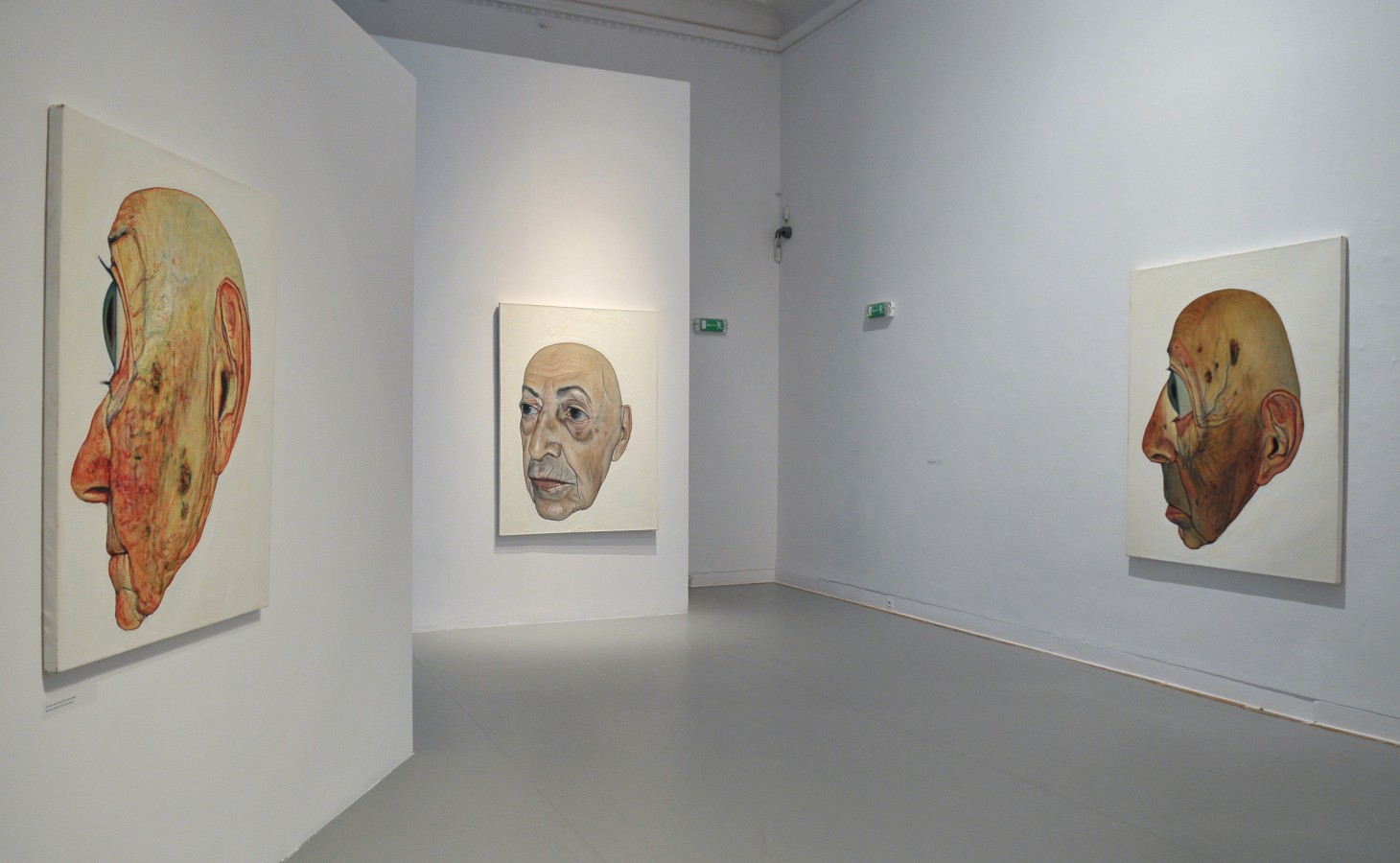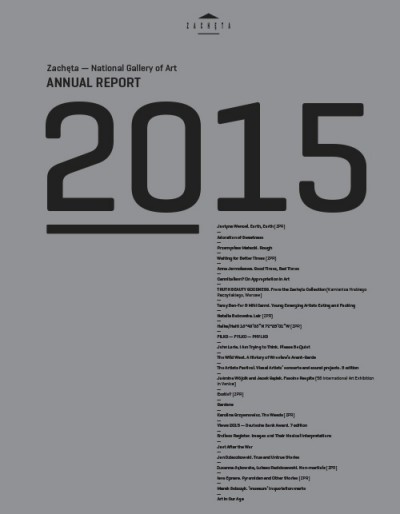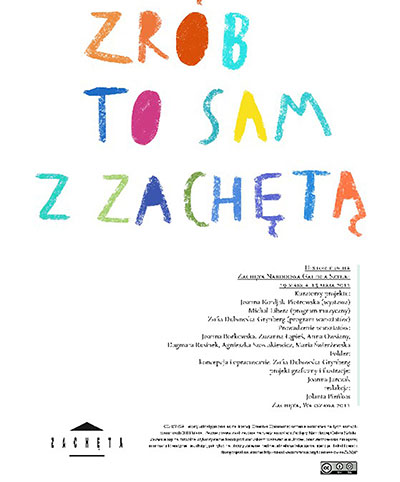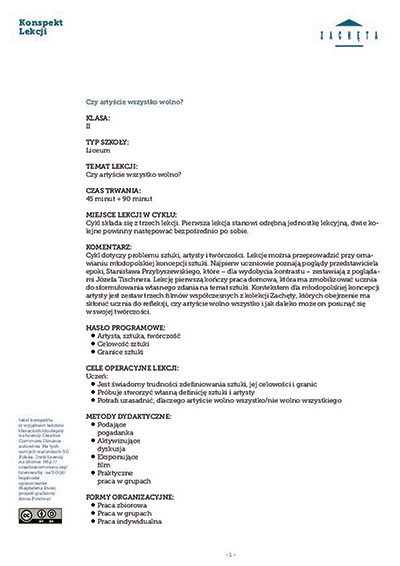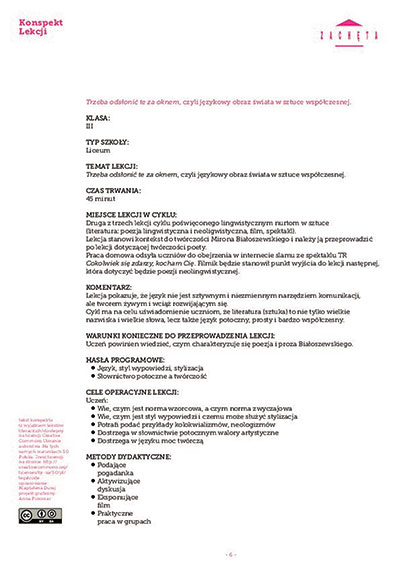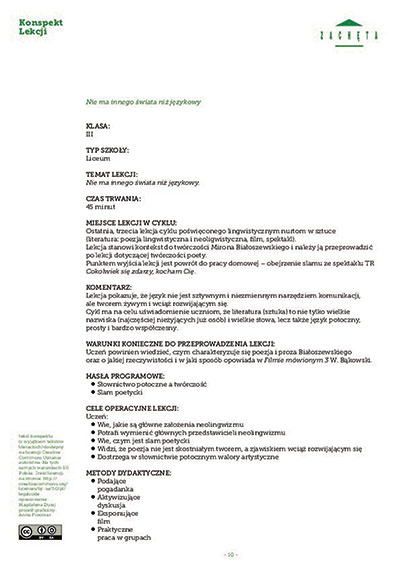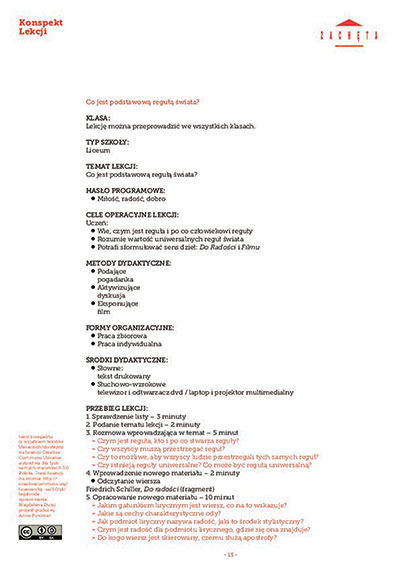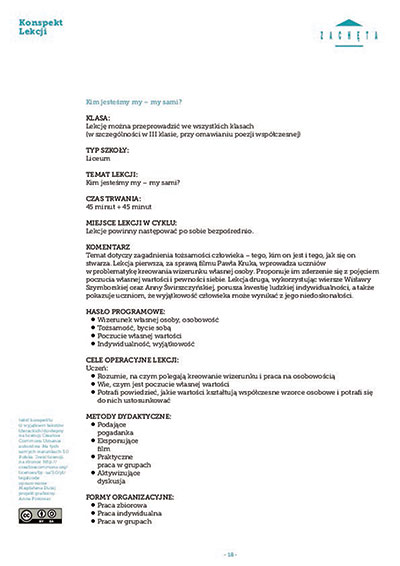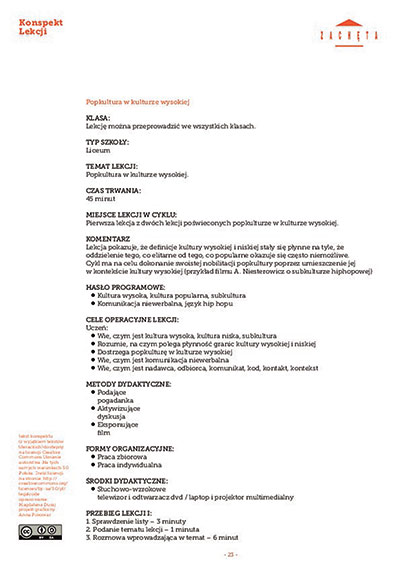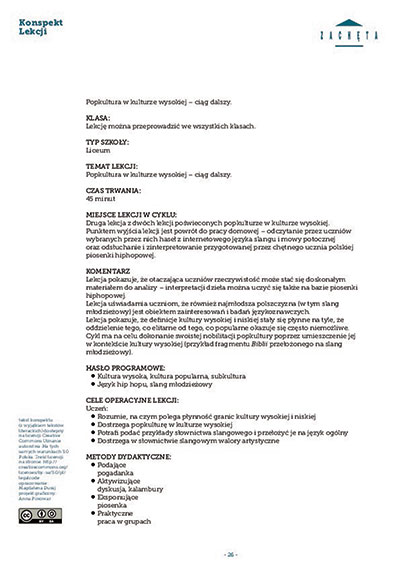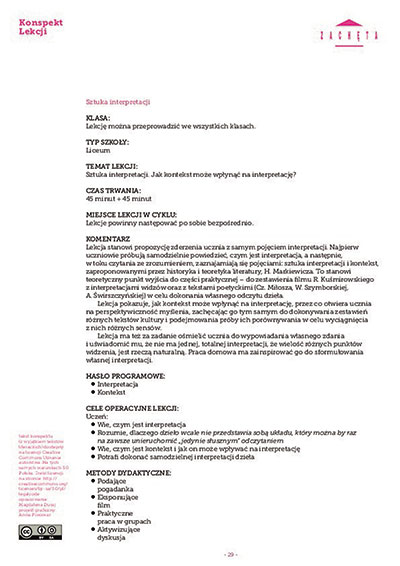Publication date: 18.04.2015
Magdalena Komornicka: You prepared the exhibition together, but you are both very strong artistic individualists. To understand the basis of your collaboration and the exhibition concept, I think it is important to start from going through your individual practices. Tamy, the primary part of your work is performance, so how did it start with the ‘talking heads’ videos?
Tamy Ben-Tor: In the very beginning, the videos were a way for me to document the performance. It was a reflection of the performance. Later on, the video became the ‘thing’ itself. But making videos wasn’t a big artistic decision. It ended quickly, because how far can you go with that? With the live performance it’s different. It is a never-ending practice because of the actual human presence, which offers endless communication and nuance.
You studied in Israel and then also in New York, where you moved. It seems that The School of Visual Theatre in Jerusalem was much more important for you than the American experience.
TBT: Both were important. The first one was more creative and interesting artistically. It was where is I first found my way around personal artistic expression. The second one was more like learning how to fight in a battle. The school in Israel was focused on performance art, puppet theatre, and interdisciplinary art in the way it is really interdisciplinary. We were supposed to become authors of the stage.
Lets go back to the ‘talking heads’. I would like to know how you perceive the older videos.
TBT: I despise them!
MK: Why?
TBT: The ‘Hitler’ videos were made between undergrad and grad school. An artist needs to create for several years before he can look back and see what he did. I think those videos are simplistic, superficial and not interesting, I think they are terrible.
Does your criticism refer to My Name Is Adolf Hitler (2003), The Hitler Sisters (2003), and Women Talk about Adolf Hitler (2004), or all of your early works?
TBT: The ‘Hitler’ videos, that’s the worst. When I see Gewald for example, or Baby Eichmann, Ithink they are good videos. I am growing and learning more about what I am doing. It is a problem when you experience such acceptance of your work at an early stage that you cannot just stop right there. Alot of artists repeat the image they were first accepted for. When my work was accepted, it disturbed me. I thought I was doing something strong, really antagonistic or critical, but it was so easily accepted. Irealised I was wrong. It wasn’t as subversive or as strong as I imagined it to be.
For the exhibition you selected nine video works, which you divided into three groups. Can you describe them?
TBT: The first group consists of Gewald (2007), Baby Eichmann (2006) and Izaak (2009). I think those meant the first step out of the ‘talking heads’ period, before the collaboration with Miki’s documentary material. They were also dealing with the way Isaw Europe’s current perception of the Holocaust. The second group consists of I’m Uzbek (2012), Memri TV (2010) and Yid (2010). They are the representation of the ‘talking heads’. Every video has its own background. Yid was a spark out of a fight we had with a friend of ours. There are many people who think talking about the Holocaust is cheesy, that they are ‘beyond it’.
Miki Carmi: It is much more relevant for Israeli to talk about the Palestinians. TBT: Yes, there is some kind of expectation that if you meet people from other countries, you’re supposed to be against Israel, you’re supposed to trash the government and say that they are like Nazis. And we don’t think Israel is like the Nazis. There are so many bad things to say about Israel, but comparing them to Nazis is vulgar and wrong.
MC: We were just criticising making money out of ‘trashing Israel’ and getting scores for these provocations.
TBT: . . . so that is where this video came from. And Memri TV actually comes from awebsite Miki’s brother sent us. It shows a lot of mainstream media from Arabic speaking countries. Casual talk shows denying the Holocaust, angry speeches of religious preachers about how you can tell if a baby that has just been born is gay. So I thought it was so demonic and sinister that I needed to make a video about it.
Where does this ‘Jewishness’ in your works come from?
TBT: Maybe it was my starting point. I think it is really my antagonism towards the persona of the young Israeli artist abroad, who is always dealing with things which are completely not related to his either Israeli or Jewish identity. Unless, of course, it looks like a postcard of that idea, a prostitution of that identity.
MC: But you have some fetish for Jewish issues.
Where is it coming from?
TBT: I just don’t like people who escape from their heritage in order to seem sophisticated. We know an Israeli artist whose work looks like he is a WASP who was raised in Vermont. It’s a kind of self-hating perversion Ithink some Israelis have.
MK: To whom do you address your works?
TBT: Miki is always the best judge of my work. He can tell without sentiment if it works or not. It’s crucial for me to have him witness my process. I always imagine an enemy that I am doing it for. This is of course complete nonsense, because what kind of enemy would go to an art exhibition?
MC: Most of your enemies!
So maybe I should not ask about the audience, but about the motivation behind your work? Do you want to change something with your videos?
TBT: I want to change people’s perception. The perception of the mainstream, so-called liberal people, who consider themselves normal, functional, who think ‘they get it’. Those are very oppressive people.
And the third group of videos includes Dear Debora (2014), The Curator (2013) and Young Emerging Artists Eating and Fucking (2015). I call them ‘art world videos’.
TBT: This is not about the art world, of course the art world is the main joke, but it is our Zeitgeist. The other night we saw the movie with Leonardo DiCaprio, don’t ask me why, the Wolf of Wall Street. This movie is telling you that if you are rich, you will be sexy, you are going to have sex, you will be young, you will be beautiful. The video is about this kind of communicates we are receiving from everywhere. There’s so much nudity in that movie but you don’t feel like you see any naked people there. Know what I mean? It’s all plastic. Miki calls it professional nudity.
I am just not sure whether this particular example (the art world) will be clear for the wide public.
TBT: I think these parameters: success, youth, fame are important not only in art world. I think this are the parameters that ‘normal, functional people’ think are acceptable. It is everywhere, in media, in politics . . . Everything is the same today, that is also a problem. The art world is just an example and I am using it is because I know it.
What is important in Miki’s works for you?
TBT: What Miki is doing is the opposite of what I am doing, in a way. It is obviously something which I admire. You know, the things one can’t do one admires the most. The way he rips out the human face and secludes it, trying to verify where the person inside the face is and what makes it a living organism. He strips it out from everything and makes it almost unbearable to look at. To search for the person inside the mask — I think that was something I was drawn to.
Miki, how did your painting concept come about? At the exhibition we will present ten paintings, from 1999 until the latest works — from 2014 and 2015. Can we describe it as a ‘life-time strategy’?
MC: The whole idea is to embody time into images. This is similar to the anthropological studies and the biopolitical situation in Europe in late 19th century, with the idea of creating biological identity. So this was my departure point 16 years ago, and I dealt with this for at least 4 years. And then I planted my family among those specimens.
Did you start with your family because you needed to explore your own identity?
MC: Of course it was about my identity, but it was more about me trying to understand this authoritarian look on different races. It was some obsession that I had, to just dig in those libraries to find the Jewish type. I was trying to understand how the oppressors saw their victims. In this case, oppressors are all those eugenics inventors. Why did they decide that certain races are inferior? And is there actually a scientific base for it? When Iwas 17 years old, Ithought that maybe there is some scientific truth in all this research. So Iwas trying to understand it, at least visually. Ilooked through hundreds of books, and once I got into the art school, I tried to construct this image of Jewish type. I combined different types, such as Armenians, Georgians and Mongolians, in order to create a Jewish type. I planted my family amongst these racial types and tried to depict them in the way the authorities depicted inferior races. I didn’t get any answer during this process. Slowly my family took over this process and it became about the abstraction of this idea. Like the foundations of this idea of eugenics. It is not about the Holocaust, it is not about the Jews . . . It wasn’t a conscious decision, but slowly it became more and more personal. I found out that I am attracted to the ‘new victims’, which are the ugly, old people. The older they get, the more they are removed of the society, and I was trying to find new protagonists.
TBT: Also, for Miki to put his family in it makes it somehow an extreme caricature. This is alarming, emotionally alarming. I think it is a provocation between him and himself, kind of a personal joke.
MC: Yes, in the beginning I really enjoyed mocking them. Everything that was not biological was very ‘bourgeois’ in that way, so I was trying to encapsulate them in something completely biological: ears, noses, lips, eyes, skin structure. When you take photographs, it is hard to create this tension and to keep it going, because you ask for a lot from the family. It was hard also for myself, because it is a very intimate situation; most of them, like my grandfather, were sick. And I went to hospitals and nursing homes trying to capture them in very strange situations. My grandmother never saw my paintings and had she seen them, she would have never let me do that. For her my paintings are like monsters. She is not aware of what she looks like, she thinks she is like Vivien Leigh, from Gone with the Wind.
TBT: But his grandfather used to love his paintings, he hanged the reproductions in his nursing home, and he would show them to all the nurses: ‘Look, this is me!’
I understood that concept is as important to you as the painting form, and you have been developing both through the years.
MC: Yes, only at the beginning the painting style was really unimportant for me. It was a conceptual project. And then I realised that painting could be a way to keep digging into these analyses. There are painters who achieve a much wider range of painterly events than I do, and also there are much better conceptual artists, so I created some kind of a hybrid of these two. It’s a balance (between those two poles) which is very exhausting for me to reach, but also very important for me.
Do you sometimes wonder where it will lead you?
MC: I had some vision of how it would be, also conceptual vision, that after 10 years you don’t see the face anymore. But it was a big failure. The first paintings were frontal and slowly I started to turn them away from the viewer’s gaze. It took me a year or two to realise that it took me away completely from my subject matter. Since Renaissance the profile was the perfect way to identify someone.
What do you need the photos and the video material for?
MC: Ever since I started working, photos have been the documentary tool. Imade hundreds of photos of the same person every year just to use it as a reference, but then it became something more, an installation and performance, in away. For many years Itried to make it valid in the exhibition situation. So the first time when paintings worked with the photos was in the book Disembodied Archetypes, where they were put together.
Was photographing everyday situations an effect of Tamy’s influence on you?
MC: Yes! There used to be thousands of photos of faces, of every part of the face, and then of course these theatrical situations attracted me also. I have always used photographs and was attracted to photography since my undergrad, when I learnt how to build my own primitive camera, develop and print my own photos. I don’t paint from one photo, it is always a paraphrase. The head shape is completely invented, anatomically it doesn’t really make sense, it organises body organs on the canvas, organs that, eventually, are supposed to look as human as possible. In 2008, I used photos in our collaborative book and then in 2012, I made an artist book that included photos of my studio’s floor deformed and covered in dirt and paint. Drawings came from Tamy’s performances, just to capture some movements, some characters in one or a few brushes. And then I use it for the mise-en-scène I create.
TBT: I remember the first time I came to see Miki’s works I was thinking: ‘What the hell is it?’ I didn’t even realise that they were paintings! It is also something we have in common — people see my performances and say: ‘Wow, you should perform on a big stage in the theatre!’ But I am not an actress, like Miki is not a painter. We have it in common, it is some kind of skill, but it comes with some kind of conceptual twist, that makes it somewhere in the middle of things.
Miki, what does the collaboration with Tamy give you?
MC: Showing paintings only became boring for me. The idea of showing once every few years this body of work was also not very realistic. So the collaboration created some context to those works, also because it opens up the more process-based material. Life always interferes with art, so that it is not boring.
The exhibition is a manifestation of your collaboration; how is the planning going? Who is the leader?
TBT: We learnt from our mistakes. First we wanted to mix the works totally, to make a chaos and I don’t know if it was working that well, because in the end we were two separate artists. So it is always an experiment, seeing if we can have the separateness and the ‘collaborative’.
-
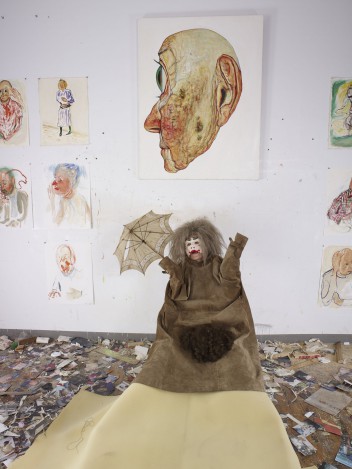 18.04 – 31.05.2015Tamy Ben-Tor & Miki CarmiYoung Emerging Artists Eating and Fucking
18.04 – 31.05.2015Tamy Ben-Tor & Miki CarmiYoung Emerging Artists Eating and FuckingTamy Ben-Tor and Miki Carmi’s exhibition is an attempt to mash together two strong artistic personalities that seemingly do not have much in common. It’s a kind of experiment – a challenge posed by the artists for themselves – or a test: can this real-life couple also work as an artistic duo?
Zachęta – National Gallery of ArtZachęta
